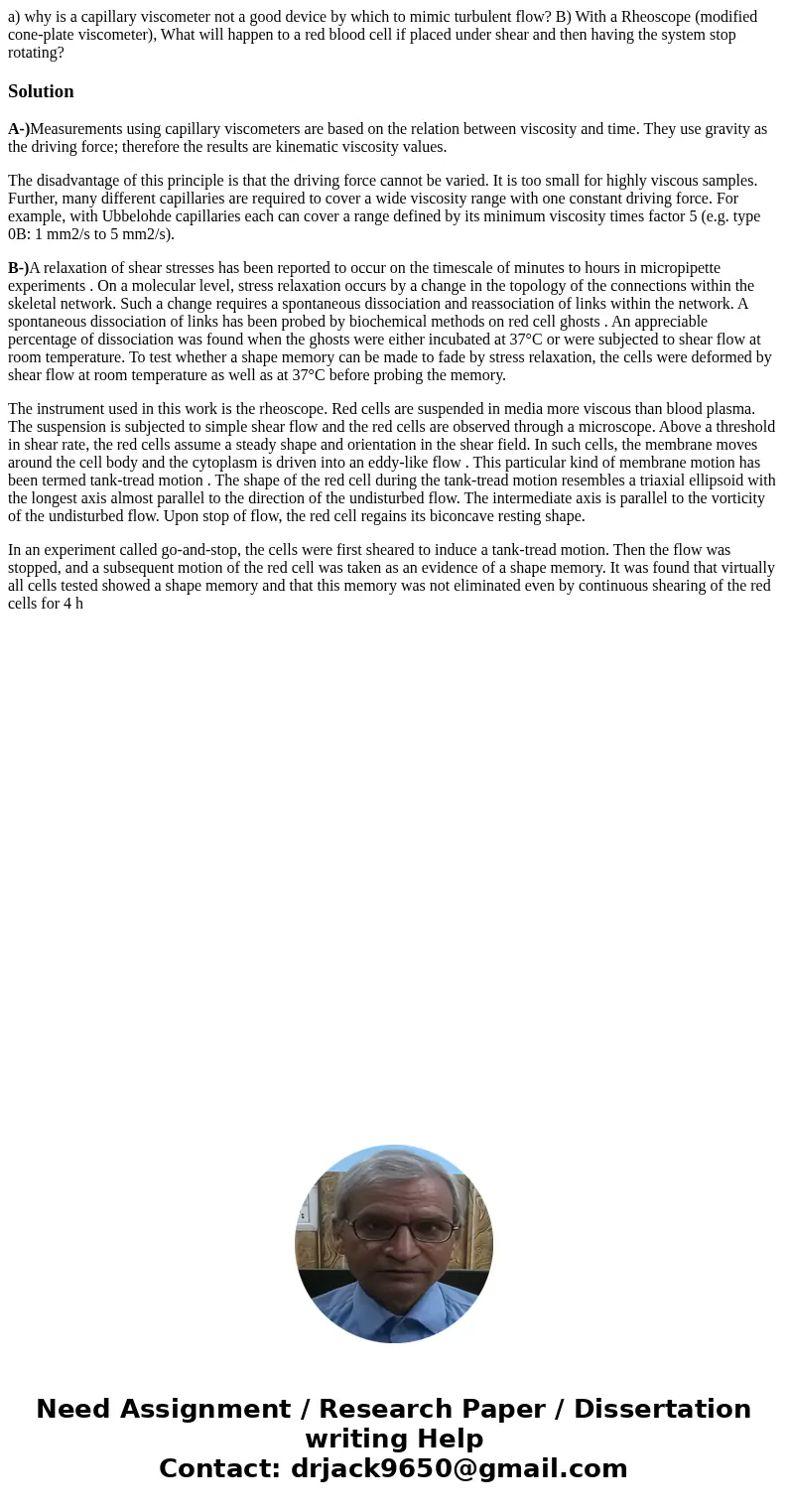a why is a capillary viscometer not a good device by which t
a) why is a capillary viscometer not a good device by which to mimic turbulent flow? B) With a Rheoscope (modified cone-plate viscometer), What will happen to a red blood cell if placed under shear and then having the system stop rotating?
Solution
A-)Measurements using capillary viscometers are based on the relation between viscosity and time. They use gravity as the driving force; therefore the results are kinematic viscosity values.
The disadvantage of this principle is that the driving force cannot be varied. It is too small for highly viscous samples. Further, many different capillaries are required to cover a wide viscosity range with one constant driving force. For example, with Ubbelohde capillaries each can cover a range defined by its minimum viscosity times factor 5 (e.g. type 0B: 1 mm2/s to 5 mm2/s).
B-)A relaxation of shear stresses has been reported to occur on the timescale of minutes to hours in micropipette experiments . On a molecular level, stress relaxation occurs by a change in the topology of the connections within the skeletal network. Such a change requires a spontaneous dissociation and reassociation of links within the network. A spontaneous dissociation of links has been probed by biochemical methods on red cell ghosts . An appreciable percentage of dissociation was found when the ghosts were either incubated at 37°C or were subjected to shear flow at room temperature. To test whether a shape memory can be made to fade by stress relaxation, the cells were deformed by shear flow at room temperature as well as at 37°C before probing the memory.
The instrument used in this work is the rheoscope. Red cells are suspended in media more viscous than blood plasma. The suspension is subjected to simple shear flow and the red cells are observed through a microscope. Above a threshold in shear rate, the red cells assume a steady shape and orientation in the shear field. In such cells, the membrane moves around the cell body and the cytoplasm is driven into an eddy-like flow . This particular kind of membrane motion has been termed tank-tread motion . The shape of the red cell during the tank-tread motion resembles a triaxial ellipsoid with the longest axis almost parallel to the direction of the undisturbed flow. The intermediate axis is parallel to the vorticity of the undisturbed flow. Upon stop of flow, the red cell regains its biconcave resting shape.
In an experiment called go-and-stop, the cells were first sheared to induce a tank-tread motion. Then the flow was stopped, and a subsequent motion of the red cell was taken as an evidence of a shape memory. It was found that virtually all cells tested showed a shape memory and that this memory was not eliminated even by continuous shearing of the red cells for 4 h

 Homework Sourse
Homework Sourse